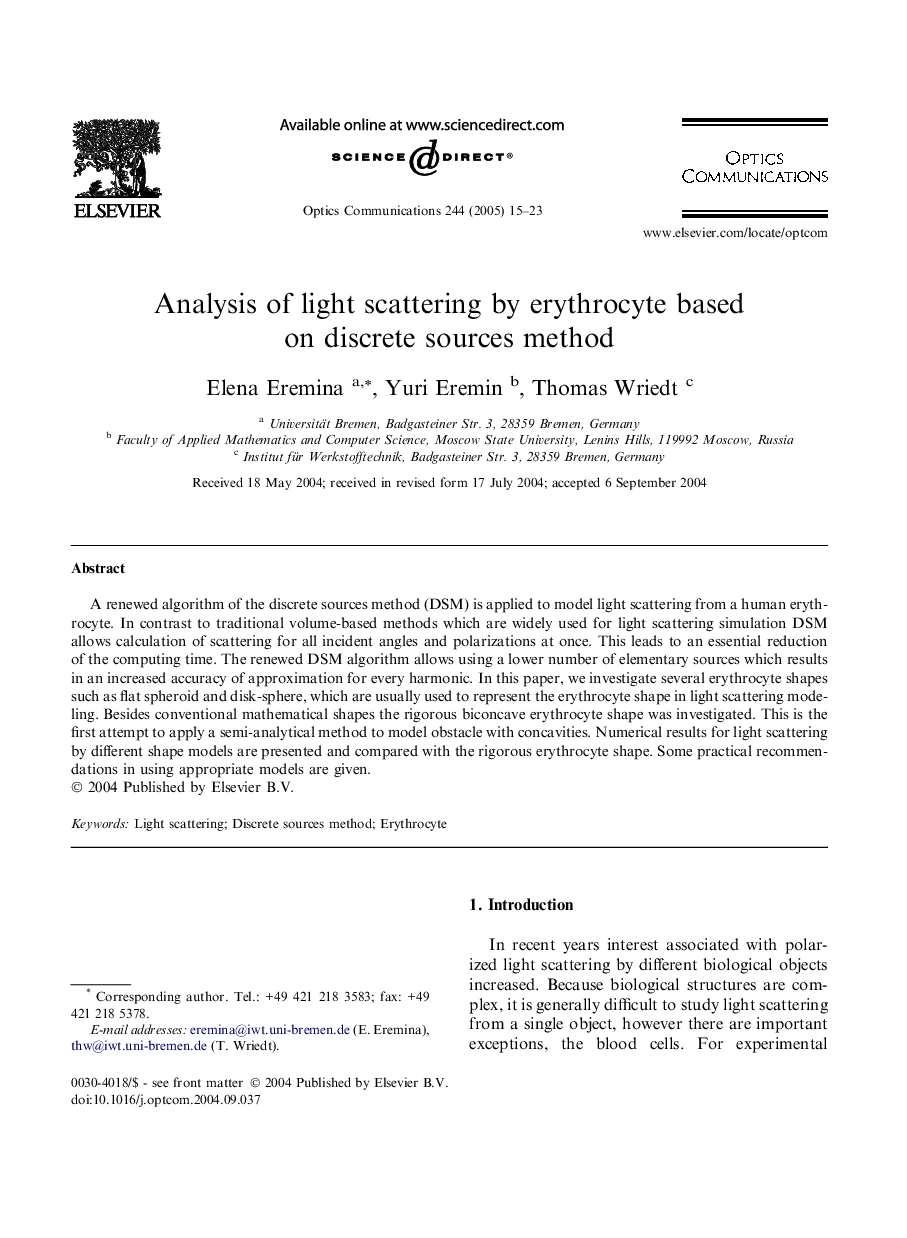| Article ID | Journal | Published Year | Pages | File Type |
|---|---|---|---|---|
| 9786197 | Optics Communications | 2005 | 9 Pages |
Abstract
A renewed algorithm of the discrete sources method (DSM) is applied to model light scattering from a human erythrocyte. In contrast to traditional volume-based methods which are widely used for light scattering simulation DSM allows calculation of scattering for all incident angles and polarizations at once. This leads to an essential reduction of the computing time. The renewed DSM algorithm allows using a lower number of elementary sources which results in an increased accuracy of approximation for every harmonic. In this paper, we investigate several erythrocyte shapes such as flat spheroid and disk-sphere, which are usually used to represent the erythrocyte shape in light scattering modeling. Besides conventional mathematical shapes the rigorous biconcave erythrocyte shape was investigated. This is the first attempt to apply a semi-analytical method to model obstacle with concavities. Numerical results for light scattering by different shape models are presented and compared with the rigorous erythrocyte shape. Some practical recommendations in using appropriate models are given.
Related Topics
Physical Sciences and Engineering
Materials Science
Electronic, Optical and Magnetic Materials
Authors
Elena Eremina, Yuri Eremin, Thomas Wriedt,
